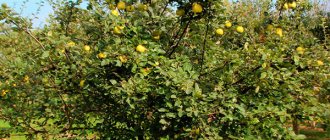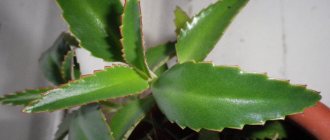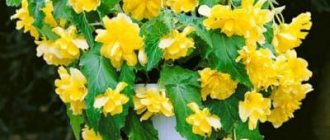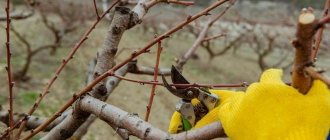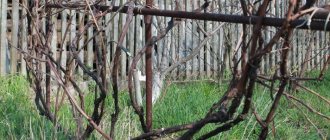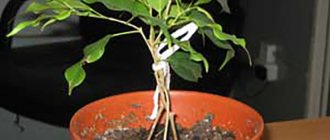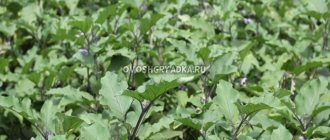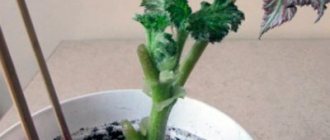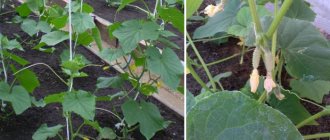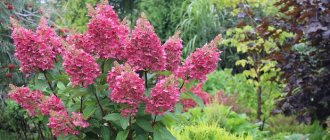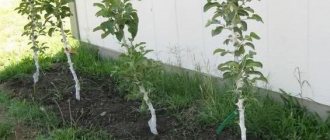Introduction
At the same time, flower growers are not limited to purely medical use: this plant has excellent decorative qualities. The plant itself is quite unpretentious, however, in order to fully realize its capabilities, you need to know some of the nuances of its cultivation.
Many people are tempted to have on hand not only an antiseptic or a remedy that accelerates wound healing, but also a beautiful example of living nature that brings aesthetic pleasure to the owner.
Currently, there are more than one and a half hundred varieties of Kalanchoe and about fifty of their hybrids. Their appearance can be very diverse, however, almost all of them retain the healing properties of their ancestors.
Medical properties
The medical use of Kalanchoe is quite wide: it is used as a bactericidal agent, has an anti-inflammatory effect, accelerates wound healing and removes toxins from the body.
Kalanchoe juice in a pipette
In addition, the juice of the plant is used to stop minor bleeding. Kalanchoe tincture is used to treat many diseases, such as thrombophlebitis; its juice is used to treat abscesses and boils.
Negative effects and contraindications of Kalanchoe
If Kalanchoe is used topically, the plant is practically harmless. Sometimes patients may experience side effects such as burning of the skin, redness or swelling. These symptoms indicate individual sensitivity. In order to avoid the development of allergies, such patients are recommended to refuse Kalanchoe therapy.
When ingesting preparations from Kalanchoe, the range of contraindications increases significantly and includes:
- hepatitis;
- cirrhosis of the liver;
- hypotension;
- joint diseases;
- allergy;
- children up to three years of age.
Internal use of Kalanchoe during pregnancy is not recommended. And local use of the plant is quite acceptable. But before resorting to such therapy, expectant mothers should definitely discuss this treatment with their doctor.
Varieties of Kalanchoe
Almost all varieties in one form or another originate from several of its main subspecies
They have a lot in common, however, there are important differences that should be mentioned in order to most fully describe the features of growing this plant in a modern apartment or house.
Kalanchoe Blossfeld
Blossfeld The size of this small plant rarely exceeds 35 cm in height. It has oval leaves with slightly jagged edges.
Sometimes the end of the leaf edge has a reddish tint. The main feature of Blossfeld is its ability to flower.
It is quite long and occurs at an unusual time for most plants. Flowering of this subspecies of Kalanchoe begins in January and can last until the end of May.
The plant is unpretentious and tolerates drought and replanting well.
Kalanchoe Kalandiva
Kalandiva is a very interesting variety in terms of appearance: the high density of flowers sometimes leads to the fact that their volume significantly exceeds the amount of leaf mass of the plant.
The flowers are quite small, however, they are collected in large beautiful inflorescences. Among lovers of decorative varieties of Kalanchoe, this particular variety is very popular.
It also blooms for quite a long time (sometimes up to six months) and differs from Blossfeld in its smaller size and leaves with a more shiny surface. In addition, this species has a large number of shades of flowers: from yellow to bright red.
Kalanchoe Pinnate
Pinnate It has a more complex structure of leaves; they have many “notches” along the perimeter. Flowers of this subspecies have a panicle-shaped inflorescence.
The coloration is predominantly red or purple, but numerous hybrids can have shades from pink to purple; The color of the leaves also varies from light green to purple.
Kalanchoe Degremona
Degremona When people talk about Kalanchoe, in most cases they mean this particular variety. This is the most familiar to the gardener, one might say, the classic version of the plant.
Its most characteristic feature is the large number of “babies” (brood buds) located along the edges of its leaves. The children form very quickly, and, having separated from the mother plant, they immediately take root when they hit the ground.
The leaves of this variety are triangular in shape and slightly curved inward.
The plant has truly fantastic abilities for growth and reproduction: its growth is practically unlimited, and, often, its upper part can break off under its own weight.
In order to maintain the plant in normal shape, it is necessary to regularly trim its top and remove excess “babies”.
Plant selection
When the question of purchasing Kalanchoe arises, there are a number of certain rules by adhering to which you can choose plants without fear of losing it in the coming months.
It all starts with an external examination of the plant and checking its mechanical strength.
The deciduous part of the plant and its stems must be elastic and have a uniform color; there should be no plaque in any form, since non-compliance with these requirements indicates Kalanchoe disease.
The plant should have an even distribution of leaves along the stem; if there are long sections of the stem devoid of leaves, this indicates injury to the plant or its diseases
One more requirement applies to decorative varieties of Kalanchoe: it is better to take a plant with a large number of unopened buds.
If the number of faded or dried buds predominates, it means that the flowering period has already passed and a new one will not come soon.
It is optimal to purchase a plant at the beginning of winter, when it begins its flowering period.
In this case, it is desirable that faded flowers and inflorescences be removed in time - this way it will have the opportunity to set new flowers.
It is mandatory at this stage to place the plant in a kind of “quarantine”, away from other plants; this will help identify its possible diseases and prevent them from spreading to other plants.
Kalanchoe pinnate - photo, description
The Latin name of Kalanchoe pinnata is Kalanchoe pinnata (Lam.) Synonyms of the name: Bryophyllum calycinum, Bryophyllum pinnatum, Cotyledon pinnata, Crassula pinnata.
The plant is perennial, has a bare, fleshy stem that is hollow inside and leaves that are dense, ovoid, bluish-green in color. At the bottom the leaves are simple, and at the top of the plant they are compound, odd-pinnate, with 6-7 leaves in the opposite pattern.
The leaves have a tart, sour, pleasant taste. The plant is loved in different countries due to its medicinal properties. In India, for example, pinnate Kalanchoe grows in literally all gardens and is widely used in Ayurveda. Particularly popular in the treatment of kidney and urinary tract diseases, diarrhea, gynecological diseases and wound treatment. The chemical composition is rich, which includes, in particular, cardiac glycosides, which can cause heart disorders when consuming the herb. Be careful when handling medicinal plants yourself and do not allow pets to chew on the leaves.
Caring for Kalanchoe
Caring for Kalanchoe at home is quite simple . The normal temperature for the plant is the range from +18 to +35 °C in summer and +12-16 °C in winter. A short-term stay of the plant at temperatures from 10°C to 15°C is allowed, but at temperatures below +5°C the plant dies.
Kalanchoe should be located in a place with good lighting, however, the use of diffused light is preferable; It is undesirable for it to be exposed to direct sunlight. The optimal location of the plant is on the windowsills of eastern or south-eastern windows.
In winter, when the sun is low above the horizon, plants can be placed anywhere, even under direct rays.
Soil mixture for Kalanchoe
Soil mixture for Kolanchoe
The mixture should be as follows:
1 turf land – 1 part
2leaf soil -2 parts
3sand – 1 part
Drainage should be about a third of the height of the pot. The optimal drainage filler is expanded clay, pebbles or small crushed stone.
Example of required drainage
Transfer
This plant is fast-growing: sometimes a doubling of leaf biomass can occur once every six months.
It is possible to restrain growth to some extent by cutting off leaves and stems, however, sooner or later there comes a time when the plant requires replanting.
In the process of transplantation
Typically, Kalanchoe is transplanted once a year. In this case, a pot with a diameter 3-4 centimeters larger than the previous one is selected.
When replanting, care should be taken not to damage the plant stem; Kalanchoe roots tolerate transplantation normally, so you shouldn’t worry too much about their safety.
Watering the plant
Frequent watering is undesirable for Kalanchoe. Watering once every 3-4 days is considered optimal; Kalanchoe does not like overly moist soil, since rot or fungus may appear on the roots and stem of the plant.
Since Kalanchoe is a succulent, it is able to accumulate moisture in its leaves.
This feature allows it to tolerate drought normally, so when watering you can be guided by the principle “it is better to under-water than over-water.”
Excess water must be removed immediately , so attention should be paid to drainage of the pot in which the plant is planted.
Proper watering
Spraying the plant is not allowed! Excess moisture from the leaves must be removed.
Also, the plant, despite its tropical origin, does not like high air humidity.
If you need to remove dust or dirt from the leaves, be sure to remove any remaining moisture from them by wiping them dry with a soft cloth.
Fertilizers
It is necessary to feed the plant no more than once a month. In this case, standard fertilizers for succulents or their combinations are used.
The most popular is a mixture consisting of nitrogen, potassium and phosphorus fertilizers in a ratio of 2.5 to 2.5 to 1. The concentration is 6 g per 2 liters of water.
Fertilizers are usually applied between April and August.
It is prohibited to feed Kalanchoe in winter.
Caring for Kalanchoe during flowering
In general, the flowering time of Kalanchoe lasts from November to March, and its duration is rarely less than four months. Considering the mainly vegetative nature of Kalanchoe propagation, it can sometimes be difficult to achieve flowering.
In order for the plant to begin to bloom, a number of conditions must be met:
1 stay of the plant at a temperature not lower than 17 °C at night and 25 °C during the day
2watering, twice as often as in “normal mode”
3 a large amount of light; Sometimes the use of phytolamps is recommended
Flowering phase
Usually, if the light is sufficient for flowering, in almost all varieties of Kalanchoe the color of the edging of the leaves changes (it can acquire either a darker shade or even become different, for example, red).
Caring for Kalanchoe after flowering
Sometimes gardeners want to get another one after one Kalanchoe flowering period. Such a procedure for the plant is not recommended, since after it the next flowering will occur only after a few seasons.
Repeated flowering is often used for large-sized plants for the purpose of further “disassembling” them into cuttings and then planting them in several pots.
This method of extreme propagation is used when the owner pursues two goals at once: refusal to further replant an overgrown bush is combined with aesthetic pleasure from the ongoing flowering.
And, although repeated flowering lasts about half as long as usual, the number of flowers sometimes exceeds their number during normal flowering.
Repeated flowering
To force the plant to bloom again, it must be placed for 3-4 weeks in the following conditions : temperature in the region of +13-15°C, daylight hours - no more than 8 hours.
You can ensure a similar regime, for example, by covering the plant with a bucket for a period of time from 14-00 to 6-00.
Plant care in winter
During this period, it should be remembered that the plant is tropical, so it is not recommended to allow it to cool below +10°C.
Since winter is the time for Kalanchoe to bloom, it is recommended to install it on the windowsills of south-facing windows to increase the amount of daylight received.
It is undesirable to place Kalanchoe next to heating devices (heaters, fan heaters, air heaters, etc.). Sometimes it is recommended to water the plant with half the frequency, but twice the amount of water (one heavy watering every two weeks).
Watering and fertilizing
Kalanchoe is watered rarely, but abundantly - three times a month . These plants tolerate drying out of the earthen clod well, but when there is excess moisture in the soil, they very often die. In winter and autumn, semi-dry maintenance is necessary; the soil is practically not moistened.
For feeding, it is better to use mineral fertilizers for succulents during the growth and flowering period.
Mineral fertilizers for succulents
Pruning Kalanchoe
Kalanchoe grows very quickly and has an excellent ability to regenerate, so it needs regular pruning.
In addition to aesthetic functions, such a procedure is important for the normal life cycle of the plant.
Pruning a home flower
The basic rule of pruning is quite simple. You can trim and pin the plant however you want, whenever and wherever you want, it will only be better for it.
But, all this applies to the “original” species and subspecies of Kalanchoe, but this is strictly contraindicated for hybrids.
Hybrids, even after minor pruning, can noticeably slow down their growth, or even die!
Functionally, flower pruning is divided into several types:
- initial
- for the purpose of prevention
- after flowering
- aesthetic
Initial pruning is specially allocated to a separate group, since its main purpose is to stimulate the growth of young plants.
It is done very simply - on each stem, 2 leaves located on top of the plant are removed. There is no need to remove the growth cone!
After some time, new shoots appear in place of the cuttings, which also need to be shortened. Thus, initial pruning becomes preventive.
When pruning after flowering, excess or wilted leaves and stems are removed, as well as faded buds and entire inflorescences. However, such pruning is carried out only after the flowering process has completed.
After trimming
Aesthetic pruning in one form or another is included in each of the listed types, and can also be done at any time convenient for the owner. Typically, shoots and leaves are removed, the growth of which leads to a deterioration in the exterior of the plant.
Reproduction
Kalanchoe has all possible methods of reproduction, however, preference is given to vegetative propagation.
Propagation by cuttings
Propagation by cuttings involves using either a large leaf or a stem with 2-3 leaves as a cutting. The cutting can be immediately rooted in almost any soil to a depth of about 2 cm, tilting it at a slight angle.
Sometimes ordinary sand is recommended as a soil, since the root system will develop faster in it.
If sand is used, the rooting depth should not exceed 1 cm. Regardless of the soil used, immediately after rooting the cuttings are watered with warm water and covered with a glass or plastic bottle for several days.
This approach makes it possible to create conditions for the young shoot that are close to greenhouse conditions; rooting goes faster in them.
Dried cuttings
Sometimes it is recommended to dry the stem cutting at room temperature for 24 hours before planting it. In this case, after rooting it is necessary not to cover the cuttings, but to wrap the entire pot with the cuttings in plastic film, after watering them first.
Propagation by cuttings is best done in late May - early June.
Reproduction by "children"
Kalanchoe pinnate and Degremon produce many babies that can be used for reproduction.
Their advantage is that they already have a root system and their cultivation is generally carried out without any problems.
“Children” or brood buds of pinnate Kalanchoe with developed roots
As a rule, the children removed from the mother plant are poured into a separate “seedling” container and sprinkled with a layer of soil about 1 cm thick. The planting must be watered daily with warm water.
Within a week, 1-2 cuttings grow from each child, which after a month are transplanted into individual pots.
When is juice needed?
It is allowed to use fresh raw materials to make juice. This remedy can be safely used to treat a runny nose and gargle. But it is better to use, if time permits, aged raw materials.
Preparation
- The Kalanchoe leaf is removed from the refrigerator and washed with water.
- Plant materials are wiped with a napkin.
- The leaf is crushed and the juice is squeezed out through cheesecloth.
The drink can be stored in a glass container for one week. The container with the medicinal liquid is stored only in the refrigerator.
How to use
Both local and internal use of Kalanchoe juice is acceptable. But in the latter case, the doctor's permission is required. Especially if the therapy is intended for children.
- Runny nose. For rhinitis, instillation of Kalanchoe juice into the nose helps. To do this, three to four drops are dripped into each nasal passage. After a while, strong sneezing will appear, after which the nose will effectively clear. Repeat the procedure every two hours. But this therapy is acceptable for adults. Treatment of Kalanchoe runny nose in children requires a reduction in dosage. Preschoolers receive one drop at a time, and schoolchildren can increase the dose to two. The event is also repeated every two hours.
- Sinusitis. An effective remedy helps to cope not only with rhinitis, but will also bring significant benefits in such complex pathologies as sinusitis. The nose is instilled with Kalanchoe juice in the same way as for a regular runny nose. The procedure is repeated for three to four days. This enhanced therapy will ensure cleansing of the maxillary sinuses.
- Adenoids. Children under the age of ten are often tormented by adenoids. Daily instillation of medicinal juice into the nose will help significantly alleviate the condition of a small patient. For adenoids, the dosage of the medicine is three drops. Drop into the nose three times a day. Improvements are noticed immediately. The cavities are cleansed, breathing becomes easier, and pain is reduced.
- Tuberculosis. Kalanchoe therapy is considered only as an additional direction. A teaspoon of juice is diluted in a third of a glass of water. To reduce the severity of symptoms caused by tuberculosis, take this medicine 30 minutes before meals twice a day.
- Erosion of the uterus. The juice is in demand in gynecology. But before use, it is diluted in equal proportions with water. The natural product is too concentrated and can leave a burn on the mucous membrane. To heal erosion, it is recommended to soak a tampon in diluted juice and leave it overnight. The production continues for two weeks.
Quite simple methods can cope with many diseases. But sometimes Kalanchoe juice has to be combined with other ingredients. For example, to cure a cough, add 100 g of honey, butter, interior fat and 50 g of cocoa to the plant component (two tablespoons). Take a teaspoon with milk. Three doses of the medicine are enough to forget about the cough.
Plant diseases and pests
Kalanchoe is a plant that is very resistant to disease. Usually, diseases or pest attacks occur if the plant is not provided with proper care.
If the leaves of a plant turn pale, it means it is not getting enough light. The lack of flowering may be due to insufficient water or incorrect feeding.
Dried leaves must be removed
Red spots on the leaves indicate that the plant is attacked by multi-clawed mites. The appearance of white tubers indicates a mealybug; it can rarely be attacked by aphids.
The method of combating parasites is quite simple: the leaves must be wiped with a cotton swab soaked in an alcohol solution.
Kalanchoe does not bloom and stretches upward! What to do? How to make Kalanchoe bloom?
Kalanchoe flower (120+ Photos & Videos) – home care, transplantation, propagation, beneficial properties + Reviews
Indications for use
It is the rich composition that determines the medicinal properties of Kalanchoe. The plant can be safely classified as a natural “doping”, because its biologically active components strengthen the body’s resistance to negative external factors and stimulate the immune system. The following medicinal properties of the Kalanchoe flower are distinguished:
- blood purification;
- elimination of inflammation;
- stimulation of immunity;
- getting rid of bacteria;
- removal of toxins;
- tissue regeneration and wound healing;
- pain relief.
It is for the antibacterial properties and the ability of the plant to restore the body that Kalanchoe is popularly nicknamed “homemade ginseng.” The plant is used for local therapy, but it can also be consumed orally. Kalanchoe can fight a wide variety of ailments. Doctors give the following indications for use:
The type species of the genus Kalanchoe is Kalanchoe laciniata. Botanical illustration from Francisco Manuel Blanco's Flora de Filipinas, 1880-1883.
- colds;
- conjunctivitis;
- gingivitis, stomatitis, periodontal disease;
- tonsillitis, tonsillitis, adenoids, otitis, runny nose, cough;
- tuberculosis;
- pustular inflammation, acne;
- varicose veins;
- joint pathologies;
- ulcers, gastritis;
- prostatitis, adenoma;
- mastitis, erosion;
- eczema, psoriasis, erysipelas;
- cuts, skin ulcers, burns, necrosis.
Despite the impressive list of beneficial properties, the use of Kalanchoe is allowed only after consultation with the attending physician. Otherwise, the medicinal crop can cause serious harm.
